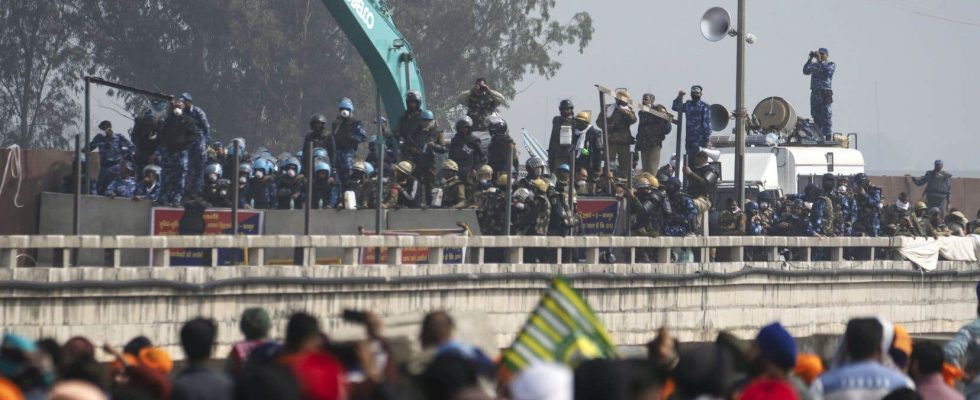Thousands of Indian farmers, on board their tractors, tried to resume their advance towards New Delhi on Wednesday, after failing to reach an agreement with the government on crop prices.
The movement hopes to reproduce the success of the siege of the highways leading to the capital which lasted a year in 2021. This standoff against the liberalization of agricultural markets had pushed the government of Prime Minister Narendra Modi to abandon its agricultural reform projects.
For the past week, police have kept at bay a column of several kilometers of farmers perched on agricultural machinery near the small village of Shambhu, several hours’ drive north of their intended destination.
The demonstrators repulsed attempts to disperse with tear gas and say they are determined to cross the lines of metal spikes and concrete barricades erected to stop their progress.
“We assure you that we will break the dams,” farmer Jagmohan Singh, 45, told AFP. “Once we cross them, we will only stop at Delhi. »
Anticipating a new attempt to break through the roadblocks, the police dropped tear gas, using drones, on the protesters’ camp.
Farmers handed out goggles and attempted to shoot down the drones with slingshots and kites to knock them off course.
They also transported earth-moving equipment to the protest site with the intention of breaching the police barricades at the appropriate time.
Haryana state police have issued a warning to owners of such devices, warning them that if they supply them to protesters and police officers become victims, they will be held criminally liable.
She denied in a statement reports by protesters that a farmer had been killed, and said a dozen police officers had been injured, some after being beaten with sticks and stones.
Unsatisfactory proposal
Farm unions are calling for a law setting a minimum price for all crops, expanding a government program that already exists for staples such as rice and wheat.
They also demand, among other concessions, the cancellation of loans and universal pensions for farmers aged 60 and over.
Protesters temporarily halted their advance towards Delhi last week pending the outcome of negotiations between government ministers and unions. But several rounds of negotiations have failed to achieve a breakthrough.
Jagjit Singh Dallewal, an agricultural lawyer, told the Press Trust of India news agency on Monday evening that the government’s latest proposal, which aims to extend price guarantees to some but not all crops, was “not in the interest of farmers.
The protests come ahead of national elections expected in April.
In India, two thirds of the population of 1.4 billion people depend on agriculture for their livelihood, which accounts for almost a fifth of the country’s GDP, according to official figures.
But for several decades, Indian agricultural incomes have largely stagnated and the sector is in acute need of investment and modernization.
The average size of farms remains modest: more than 85% of farmers own less than two hectares of land. And less than one in a hundred farmers own more than 10 hectares, according to a 2015-2016 Ministry of Agriculture survey.
Water shortages, flooding and erratic weather conditions linked to climate change, as well as debt, are taking a heavy toll on farmers.
More than 300,000 of them have committed suicide since the 1990s, according to official figures, and many farmers deplore a state of constant financial distress.
